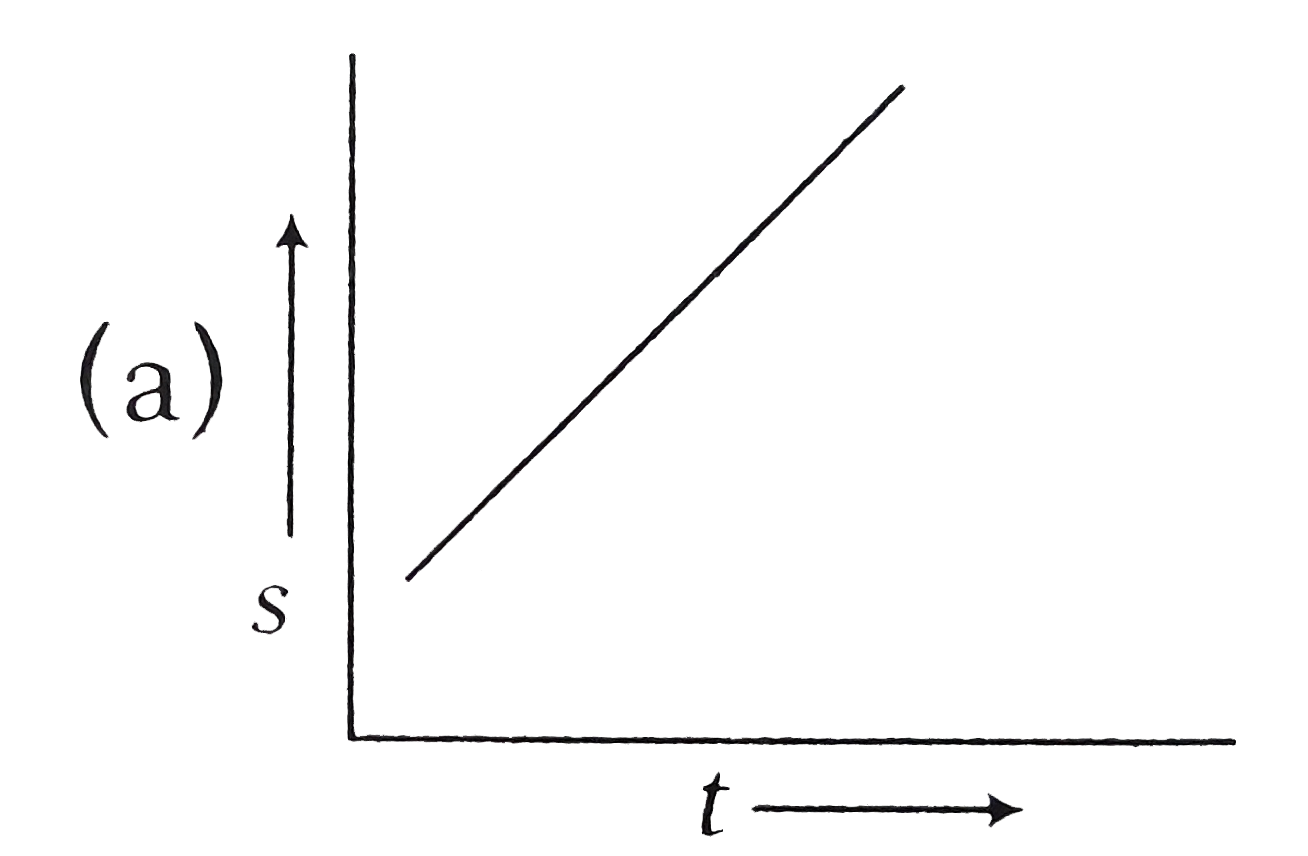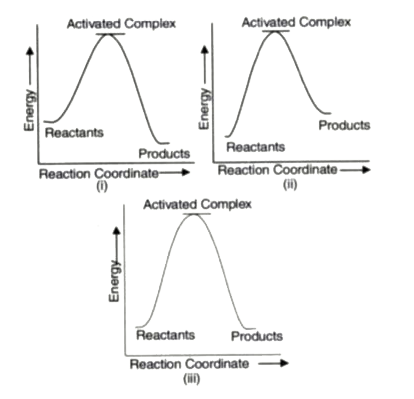Which of the following graph represents uniform motion



None of these
The correct Answer is:A
To determine which graph represents uniform motion, we need to understand the concept of uniform motion and how it is represented on a displacement-time graph.
1. Understand Uniform Motion:
- Uniform motion occurs when an object travels equal distances in equal intervals of time, meaning its velocity remains constant throughout the motion.
2. Identify the Graph Type:
- We are dealing with displacement-time graphs. The slope of a displacement-time graph represents the velocity of the object.
3. Analyze the Slope:
- For uniform motion, the slope of the displacement-time graph must be constant. This means that the line representing the motion should be straight (not curved) and should not change its steepness.
4. Evaluate Each Option:
- Option A: The slope is constant throughout the graph. This indicates that the velocity is constant, which is characteristic of uniform motion.
- Option B: The slope varies at different points on the graph. This indicates that the velocity is changing, which means it does not represent uniform motion.
- Option C: Similar to option B, the slope varies, indicating a change in velocity and thus not representing uniform motion.
5. Conclusion:
- Since only Option A has a constant slope, it is the only graph that represents uniform motion.
Final Answer:
The graph that represents uniform motion is Option A.
---
- Uniform motion occurs when an object travels equal distances in equal intervals of time, meaning its velocity remains constant throughout the motion.
- We are dealing with displacement-time graphs. The slope of a displacement-time graph represents the velocity of the object.
- For uniform motion, the slope of the displacement-time graph must be constant. This means that the line representing the motion should be straight (not curved) and should not change its steepness.
- Option A: The slope is constant throughout the graph. This indicates that the velocity is constant, which is characteristic of uniform motion.
- Option B: The slope varies at different points on the graph. This indicates that the velocity is changing, which means it does not represent uniform motion.
- Option C: Similar to option B, the slope varies, indicating a change in velocity and thus not representing uniform motion.
- Since only Option A has a constant slope, it is the only graph that represents uniform motion.
The graph that represents uniform motion is Option A.
Topper's Solved these Questions
- BOOK - DC PANDEY ENGLISHCHAPTER - MOTION IN A PLANEEXERCISE - Check point 3.715videos
MOTION IN A PLANE
- BOOK - DC PANDEY ENGLISHCHAPTER - MOTION IN A PLANEEXERCISE - (A) Taking it together75videos
MOTION IN A PLANE
- BOOK - DC PANDEY ENGLISHCHAPTER - MOTION IN A PLANEEXERCISE - Check point 3.525videos
MOTION IN A PLANE
- BOOK - DC PANDEY ENGLISHCHAPTER - MOTIONEXERCISE - Medical entrances gallery19videos
MOTION
- BOOK - DC PANDEY ENGLISHCHAPTER - PROJECTILE MOTIONEXERCISE - Level - 2 Subjective10videos
PROJECTILE MOTION
Similar Questions
Knowledge Check
- Question 1 - Select One
Which of the following graphs represents the position time-graph of a particle moving with negative velocity?
A B
B C
C D
D
- Question 2 - Select One
Which of the following graphs represents exothermic reaction ?
 A(i) onlyB(ii) onlyC(iii) onlyD(i) and (ii)
A(i) onlyB(ii) onlyC(iii) onlyD(i) and (ii) - Question 3 - Select One
Which of the following graphs represents exothermic reaction ?
 A(i) onlyB(ii) onlyC(iii) onlyD(i) and (ii)
A(i) onlyB(ii) onlyC(iii) onlyD(i) and (ii)
Which of the following graph represents the variation of resistivity (ρ) with temperature (T) for copper?
View SolutionThe speed-time graph for a car is shown is Figure

(a) Find how far does the car travel in the first 4 seconds. Shade the area on the graph that represents the distance travelled by the car during this period.
(b) Which part of the graph represents uniform motion of the car ?View SolutionWhich of the following graph represents exothermic reaction ?
 View Solution
View SolutionWhich one of the following graphs represent a function? (FIGURE)
View SolutionWhich of the following graphs represents exothermic reaction ?
 View Solution
View Solution



